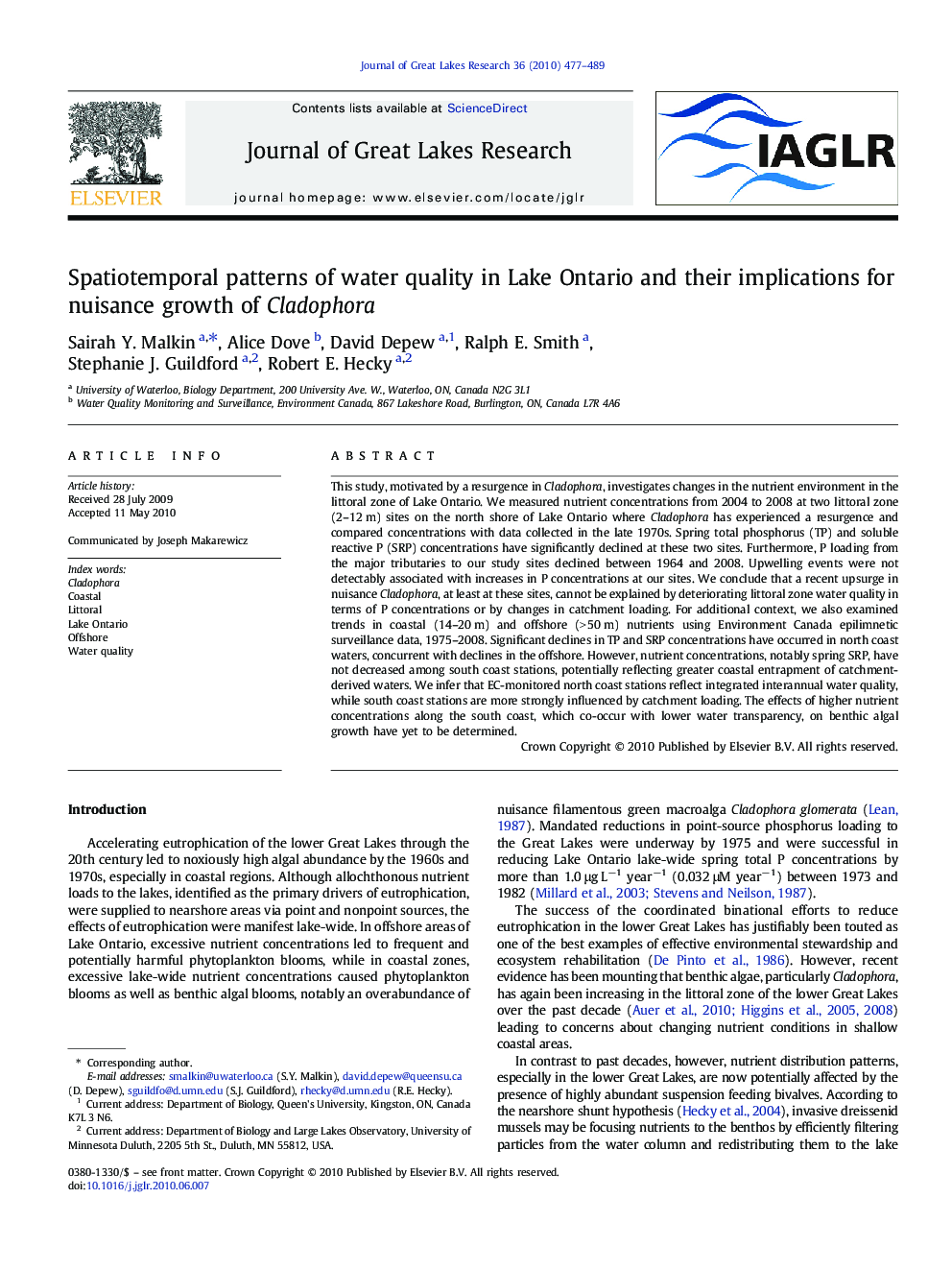| Article ID | Journal | Published Year | Pages | File Type |
|---|---|---|---|---|
| 4399098 | Journal of Great Lakes Research | 2010 | 13 Pages |
Abstract
This study, motivated by a resurgence in Cladophora, investigates changes in the nutrient environment in the littoral zone of Lake Ontario. We measured nutrient concentrations from 2004 to 2008 at two littoral zone (2-12Â m) sites on the north shore of Lake Ontario where Cladophora has experienced a resurgence and compared concentrations with data collected in the late 1970s. Spring total phosphorus (TP) and soluble reactive P (SRP) concentrations have significantly declined at these two sites. Furthermore, P loading from the major tributaries to our study sites declined between 1964 and 2008. Upwelling events were not detectably associated with increases in P concentrations at our sites. We conclude that a recent upsurge in nuisance Cladophora, at least at these sites, cannot be explained by deteriorating littoral zone water quality in terms of P concentrations or by changes in catchment loading. For additional context, we also examined trends in coastal (14-20Â m) and offshore (>Â 50Â m) nutrients using Environment Canada epilimnetic surveillance data, 1975-2008. Significant declines in TP and SRP concentrations have occurred in north coast waters, concurrent with declines in the offshore. However, nutrient concentrations, notably spring SRP, have not decreased among south coast stations, potentially reflecting greater coastal entrapment of catchment-derived waters. We infer that EC-monitored north coast stations reflect integrated interannual water quality, while south coast stations are more strongly influenced by catchment loading. The effects of higher nutrient concentrations along the south coast, which co-occur with lower water transparency, on benthic algal growth have yet to be determined.
Related Topics
Physical Sciences and Engineering
Earth and Planetary Sciences
Earth and Planetary Sciences (General)
Authors
Sairah Y. Malkin, Alice Dove, David Depew, Ralph E. Smith, Stephanie J. Guildford, Robert E. Hecky,
